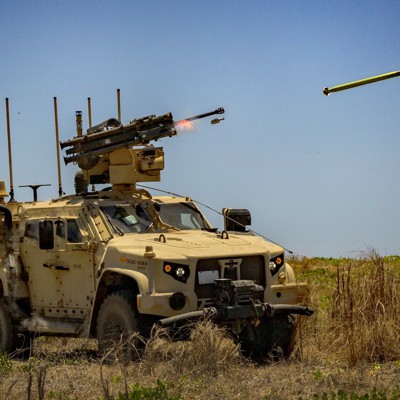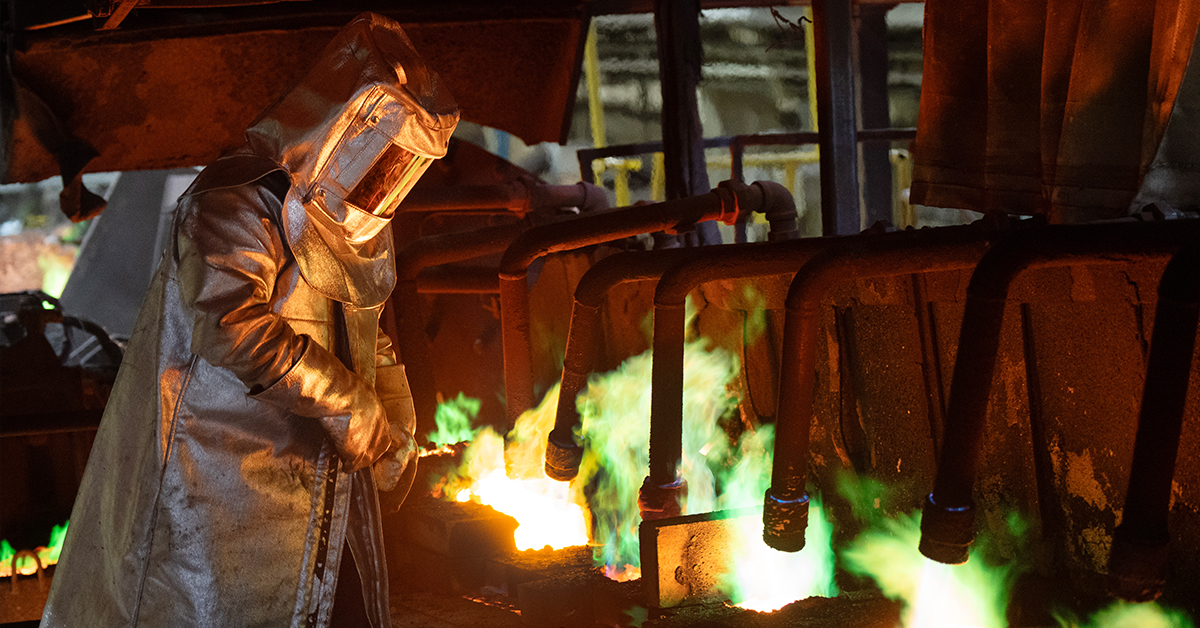HavokFour
Army.ca Veteran
- Reaction score
- 1,951
- Points
- 1,040
Since you're all on the topic. The barrage balloon enters the C-UAS game, and still leagues cheaper that traditional missiles.

When it comes to major equipment we need to start thinking in billions.What an odd way of saying $250 million and $400 million.
Made all the more complicated for those who advocate to move CAF bases to urban areas because that's where folks want to live.A ordinary hanger will provide protection against a homemade/civilian based drone attack if the bay door is closed. It does mean that you need a protection team in place when bay doors are open and aircraft are being moved. Protecting the fighters will be easier than the larger aircraft. You may have to build "net tents" that the aircraft can fit under. Likely incorporated in with protective berms. Permanent jammers in place that can be switched on and off as needed and optical trackers. Which will no doubt cue onto every fricking bird that goes by. Hopefully energy weapons will become reliable enough to be used near urban areas to avoid falling shrapnel. A couple of dudes with shotguns on duty with a truck mounted optical tracker is also required to escort aircraft as they move or hangers/nets are open.
For airfields not in urban areas, but near non-military structures (ruralish) I have to think that 20mm gives you some reach, but with a smaller safety zone for falling shells/debris, for airfields closers to other structures, a smaller caliber. The internet gives me a danger zone of a 20mm at roughly 6.5km. So for Comox, you would have to stick to 5.56 or 7.62 and you need gunners well trained to avoid shooting your own buildings, antennas, etc.
And from looking at video of drone attacks, those people would need to be empowered and trusted to pull the trigger independent of any command input. Because when it happens, the OODA loop might take not much more time that it did to read this reply. The difference between decision and delay could be a destroyed CC-177 or CC-330.Made all the more complicated for those who advocate to move CAF bases to urban areas because that's where folks want to live.
I would imagine firing weapons in anger on Canadian soil who require a whole command structure behind the few folks who would have to pull the triggers.
A ordinary hanger will provide protection against a homemade/civilian based drone attack if the bay door is closed. It does mean that you need a protection team in place when bay doors are open and aircraft are being moved. Protecting the fighters will be easier than the larger aircraft. You may have to build "net tents" that the aircraft can fit under. Likely incorporated in with protective berms. Permanent jammers in place that can be switched on and off as needed and optical trackers. Which will no doubt cue onto every fricking bird that goes by. Hopefully energy weapons will become reliable enough to be used near urban areas to avoid falling shrapnel. A couple of dudes with shotguns on duty with a truck mounted optical tracker is also required to escort aircraft as they move or hangers/nets are open.
For airfields not in urban areas, but near non-military structures (ruralish) I have to think that 20mm gives you some reach, but with a smaller safety zone for falling shells/debris, for airfields closers to other structures, a smaller caliber. The internet gives me a danger zone of a 20mm at roughly 6.5km. So for Comox, you would have to stick to 5.56 or 7.62 and you need gunners well trained to avoid shooting your own buildings, antennas, etc.
And from looking at video of drone attacks, those people would need to be empowered and trusted to pull the trigger independent of any command input. Because when it happens, the OODA loop might take not much more time that it did to read this reply. The difference between decision and delay could be a destroyed CC-177 or CC-330.

Recent interactions in the Middle East, plus Russia’s relentless assault on Ukraine, have shown that even smaller adversaries like Iran are able to quickly produce ever-larger swarms of drones, in addition to other missiles. While U.S. forces have shown that they can handle the current volume of threats, they are increasingly relying on expensive missiles to do so.
Taking humans out of the decision loop may sound like a brave new world of unthinking killer robots, but the technology behind autonomous defense against threats like drones isn’t actually new. The Navy has long relied on the Phalanx Close-In Weapon System to protect ships from fast-moving threats at sea. The currentPhalanx system uses radar to detect rapidly incoming objects and shoot at them without requiring human permission or input.
Of course, for a Navy ship in open water, shooting at the boat that’s barreling toward your destroyer is unlikely to result in a collateral damage catastrophe, though it is possible.
Greater autonomy is also creeping into land-based drone defense systems.
Not sure, you likley still get a casing falling to the ground.How about when working with programmable ammunition?
Is the danger zone the same?
Wouldn't you just get a cloud of pellets tumbling to the ground at the detonation point?
Not sure, you likley still get a casing falling to the ground.
Give me a medium cargo truck, and one of those new dragon fire lasers the British developed. Merge them together with a palletized battery pack with quick disconnects in the cargo hold. Bam got out counter CUAS.I am minded of a tale I heard about WW2 in Britain. The place was covered in anti-aircraft guns. 40mm was Light and 3.7" was heavy. If thse were firing solid shot then I reckon their misses would have caused more damages than the Luftwaffe. Instead the proximity rounds generated clouds of shrapnel so that the gunners were happy to have their tin pan helmets. Apparently the shrapnel pattered down like rain.
get CESSNA to re-open the Skymaster assembly line. Ukraine has proven that you don't need a sophisticated aircraft and the O2 could withstand a fair bit of punishment and bring the pilot home. Use them to meet the drones on the way in with your lasers as local defense.Give me a medium cargo truck, and one of those new dragon fire lasers the British developed. Merge them together with a palletized battery pack with quick disconnects in the cargo hold. Bam got out counter CUAS.
get CESSNA to re-open the Skymaster assembly line. Ukraine has proven that you don't need a sophisticated aircraft and the O2 could withstand a fair bit of punishment and bring the pilot home. Use them to meet the drones on the way in with your lasers as local defense.
get CESSNA to re-open the Skymaster assembly line. Ukraine has proven that you don't need a sophisticated aircraft and the O2 could withstand a fair bit of punishment and bring the pilot home. Use them to meet the drones on the way in with your lasers as local defense.
Probably 2 pods of 19 rocketsHow many LAU pods of Hydra/CRV7/APKWS could one of those carry?

I gotta say- Roshel has come along way in the past few years and is beginning to make a pretty big splash on the Canadian Defence scene.
Having a domestic producer of ballistic steel again will be huge for us.

Now that we have a guy at the helm who (hopefully) appreciates that, let's hope that the decade of industrial darkness is hopefully over.

